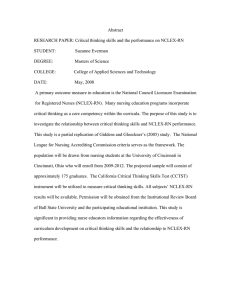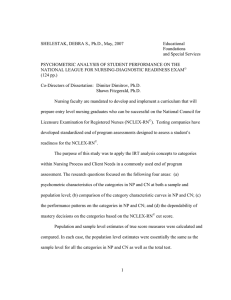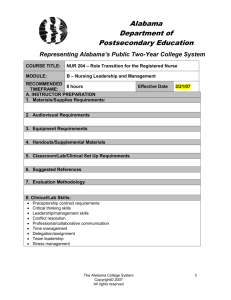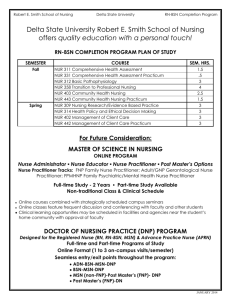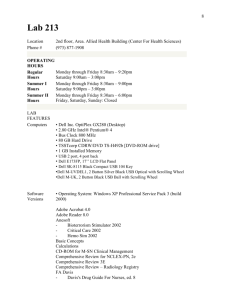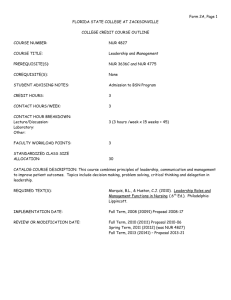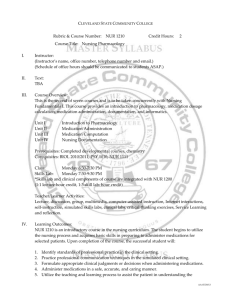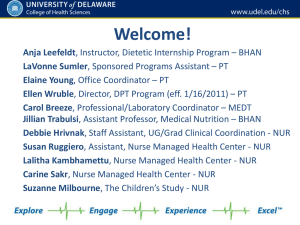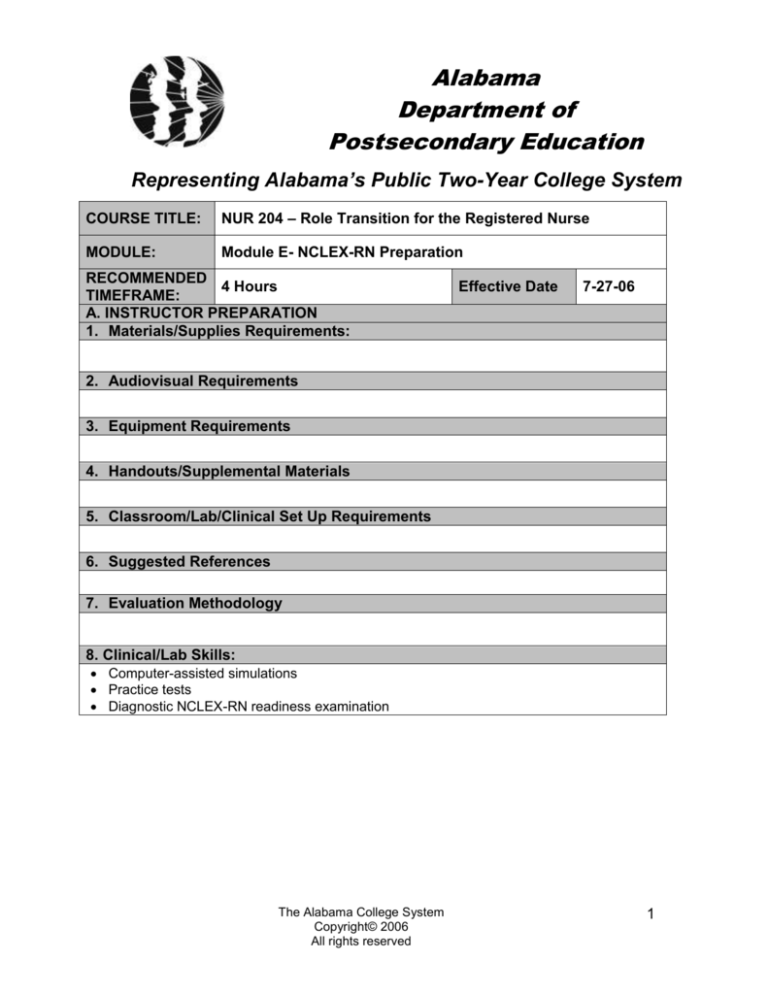
Alabama
Department of
Postsecondary Education
Representing Alabama’s Public Two-Year College System
COURSE TITLE:
NUR 204 – Role Transition for the Registered Nurse
MODULE:
Module E- NCLEX-RN Preparation
RECOMMENDED
4 Hours
TIMEFRAME:
A. INSTRUCTOR PREPARATION
1. Materials/Supplies Requirements:
Effective Date
7-27-06
2. Audiovisual Requirements
3. Equipment Requirements
4. Handouts/Supplemental Materials
5. Classroom/Lab/Clinical Set Up Requirements
6. Suggested References
7. Evaluation Methodology
8. Clinical/Lab Skills:
Computer-assisted simulations
Practice tests
Diagnostic NCLEX-RN readiness examination
The Alabama College System
Copyright© 2006
All rights reserved
1
Role Transition for the Registered Nurse
Module E
NUR 204
B. SUGGESTED PRESENTATION METHODS
1. COMPETENCIES AND OBJECTIVES
COMPETENCY
PERFORMANCE OBJECTIVES
E1.0 Prepare for the NCLEX-RN.
E1.1 Take necessary actions to prepare to
complete the NCLEX-RN.
Instructor Notes:
ACS Copyright © 2006
All Rights Reserved
2
Role Transition for the Registered Nurse
Module E
NUR 204
B. SUGGESTED PRESENTATION METHODS
2. LEARNING OBJECTIVES
E1.1.1 Explain the Computerized Adaptive Testing (CAT).
E1.1.2 Explain the steps for preparing for the NCLEX-RN.
E1.1.3 Identify elements of the NCLEX-RN test plan.
E1.1.4 Explain test taking strategies.
E1.1.5 Explain the elements of a prescriptive plan for remediation.
Instructor Notes:
ACS Copyright © 2006
All Rights Reserved
3
Role Transition for the Registered Nurse
Module E
NUR 204
D. LESSON DEVELOPMENT
Theory = T
Lab = L
Clinicals = C
T
T
L
MAIN POINTS
C
1.0 Preparing for the NCLEX-RN- See Instructor’s Notes
1.1 Encourage students to consider:
1.1.1 Budget for graduation, licensure, and NCLEX fees and
associated costs.
1.1.2 Investigate review courses and texts.
1.1.3 Develop a plan of study.
1.1.4 Test-taking tips- go to bed early the night before the exam,
avoid alcohol consumption, eat a well-balanced breakfast, dress
comfortably in layers, and arrive at the test site a little early.
T
2.0 NCLEX-RN Test Plan
2.1 Categories of client needs
2.1.1 Safe Effective Care Environment
2.1.1.1 Management of Care
2.1.1.2 Safety and Infection Control
2.1.2 Health Promotion and Maintenance
2.1.3 Psychosocial Integrity
2.1.4 Physiological Integrity
2.1.4.1 Basic Care and Comfort
2.1.4.2 Pharmacological and Parenteral Therapies
2.1.4.3 Reduction of Risk Potential
2.1.4.4 Physiological Adaptation
2.2 Integrated Concepts
2.2.1 Nursing Process
2.2.2 Caring
2.2.3 Communication and Documentation
2.2.4 Teaching and Learning
2.3 Percentages of items
T
3.0 Test-taking strategies
3.1
Read the question stem carefully.
3.2
Evaluate all the options in a systematic manner.
3.3
Eliminate options you know are not correct.
3.4
Choose the most global answer.
3.5
Identify similarities in the options and find one that is different.
3.6
Base answers on the ideal situation.
3.7
Evaluate priority questions based on the Nursing Process and
Maslow’s Hierarchy of Needs.
3.8
Select answers that focus on the patient, rather than the equipment,
hospital rules or policies.
3.9
Selecting “Call the physician” is rarely the correct answer. Identify the
best nursing intervention.
3.10 Regarding delegation questions- Do not delegate:
3.10.1 Steps of the Nursing Process
3.10.2 Teaching or evaluating responsibilities
ACS Copyright © 2006
All Rights Reserved
4
Role Transition for the Registered Nurse
Module E
T
T
T
NUR 204
3.11
Regarding delegation questions- Do delegate:
3.11.1 The most stable patient with the most predictable
response to care.
3.11.2 Tasks that have the most specific guidelines such as
collecting a urine sample, feeding, providing hygiene,
ambulating, etc.
4.0 Preparation of Applications for Board of Nursing and Registration for
NCLEX- RN
5.0 Remediation
ACS Copyright © 2006
All Rights Reserved
5
Role Transition for the Registered Nurse
Module E
NUR 204
E. ASSIGNMENTS AND DUE DATES
F. SUMMARY AND REVIEW
ACS Copyright © 2006
All Rights Reserved
6

